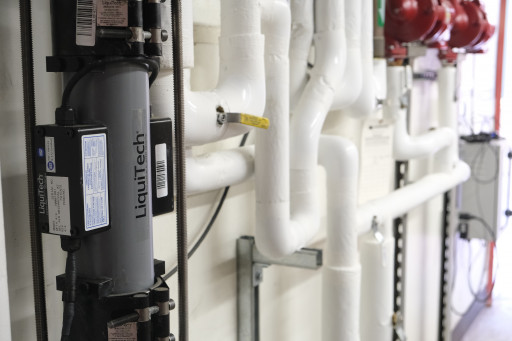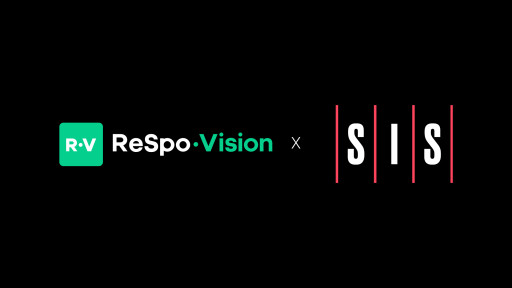
Legionnaires’ disease cases have increased nearly tenfold in recent decades, leading to thousands of hospitalizations and deaths. Outbreaks are linked to Legionella, a bacteria found in potable water systems in large facilities like hospitals, multi-family buildings, resorts, and office buildings. A recently published study shows that copper-silver ionization effectively controls Legionella in building water systems to prevent Legionnaires’ disease.
LOMBARD, Ill., March 28, 2023 (Newswire.com)
–
A new study published in the American Water Works Association (AWWA) Water Science journal shows that copper-silver ionization effectively controls Legionella in building water systems. The study, conducted by Dr. Mark LeChevallier with technical and financial support from LiquiTech, examines more than 80 sources of research studies and related literature to analyze the efficacy of copper-silver ionization as a water treatment solution. Dr. LeChevallier concludes “that use of copper-silver ionization to control Legionella and other opportunistic pathogens is highly effective when the units are properly designed, maintained, and operated.”
Legionnaires’ disease cases have increased nearly tenfold in recent decades, leading to thousands of hospitalizations. Those who catch Legionnaires’ disease experience a severe form of pneumonia caused by Legionella, a bacteria found in poorly maintained water systems.
Studies show that Legionella is responsible for about two-thirds of all disease outbreaks from drinking water and the cause of all documented deaths attributed to drinking water-associated infections.
Historically, outbreaks were linked to cooling tower systems. As our understanding of Legionella has advanced over recent decades, most outbreaks are now connected to potable water systems in large facilities, such as hospitals, long-term healthcare facilities, resorts, and office buildings. It’s estimated that 54% of all potable building water systems have some level of Legionella present.
Plumbing codes and regulations have been developed to standardize the design, structure, and management of building water systems to prevent waterborne diseases. However, based on the studies cited in this article and elsewhere, there is a need for supplemental treatment of building water systems.
One such supplemental treatment is copper-silver ionization, a chemical-free disinfection solution for potable water systems. It releases copper and silver ions into the building’s water system to destroy waterborne pathogens like Legionella.
Copper-silver ionization is not a new water treatment option. Silver ionization was used in the 1960s by NASA for the sanitation of water on spacecraft. In the 1980s, copper-silver ionization was used in swimming pools as an alternative to chlorine.
Later, in 1994, copper-silver ionization was the first reported effective treatment for controlling Legionella in a hospital. Today, copper-silver ionization is used to prevent waterborne pathogens in a variety of buildings with complex water systems.
Although copper-silver ionization is a low-cost and chemical-free option for water disinfection, the system must be designed properly and used in the appropriate applications to achieve optimal results. Crucial to its effectiveness is identifying and responding to abnormalities in water usage patterns and chemistry.
Dr. LeChevallier, a drinking water research scientist with a Ph.D. in Microbiology, examined literature and studies related to copper-silver ionization system design, maintenance, and operations, and the impact water chemistry has on its performance. In addition to authoring more than 300 research papers, Dr. LeChevallier is a member of the Drinking Water Subcommittee of the Science Advisory Board of the United States Environmental Protection Agency (US EPA), a past member of the Water Science Technology Board of the National Academies of Science, and the past Chair of the AWWA Water Science & Research Division.
In his recently published study, Dr. LeChevallier explained, “These water quality and operational characteristics must be properly addressed to assure that the highest disinfection efficacy is obtained through copper-silver ionization.”
He reviewed research and related literature to investigate the mechanisms of copper and silver disinfection. Copper-silver ionization works by treating water through electrolysis. An electric current is applied to a copper and silver bar to produce and release positively charged ions. These copper and silver ions then find microorganisms in the water with a negative charge, like Legionella. The copper ions bond to the negative walls of the microorganisms, disrupting cell wall permeability and the absorption of life-sustaining nutrients. This disruption to the cell wall allows the silver ions to enter and destroy the core of the bacteria, thus making it impossible to survive.
Dr. LeChevallier cited studies showing that copper and silver can work as biocides independently or together. One study emphasized that combined treatment with copper and silver was associated with decreased incidence of Legionella and a faster reduction of bacteria than copper or silver alone.
In addition to copper-silver ionization being considered an effective supplemental method for water treatment by researchers, the US EPA has recognized both copper and silver as metallic antimicrobial agents. Studies show that copper-silver ionization is effective against many waterborne pathogens, including Legionella, Nontuberculous Mycobacterium, Pseudomonas, Stenotrophomonas, Acinetobacter, and fungi.
While the issue of copper-silver resistance was discussed in portions of the literature that Dr. LeChevallier reviewed, it’s important to note that there was no evidence of it occurring with Legionella. Copper-silver resistance, where pathogens can continue to grow and thrive even in the presence of copper and silver, was only observed with E. coli and Salmonella.
During his investigation, Dr. LeChevallier found that the design, operation, and maintenance of copper-silver ionization systems are critical to their effective functionality. In his published paper, he explained that copper-silver ionization will act as a water disinfectant; however, the proper engineering and operation of the system are integral to its success.
Essential components of the copper-silver ionization system include the electrodes, flow cells, power supply, control panel, flow meter, and web interface. Each component must be operated and maintained for copper-silver ionization to be most effective.
“Buyers of [copper-silver ionization] systems should pay attention to the design and configuration of the electrodes – particularly as they wear. The construction of the flow cell and the adequacy of the power supply are important to deliver the necessary amperage to achieve the target copper and silver concentrations. Copper and silver doses should be flow paced and can be remotely monitored with a web-based interface,” said Dr. LeChevallier.
Additionally, Dr. LeChevallier cautioned that water quality can impact copper-silver ionization as a water treatment. He explained that water chemistry, physiochemical, and environmental factors can influence the efficacy of copper-silver ionization if not considered and managed correctly.
Specific factors to consider include temperature, oxygen levels in the water, flow, pH levels, and levels of biofilm, sediment, and other chemicals that can impact the performance of copper-silver ionization. He stressed that these factors must be considered during planning, commissioning, and system operations for copper-silver ionization to be successful.
Dr. LeChevallier cited several case studies where copper-silver ionization was implemented in a building water system with positive outcomes. He explained that University of Pittsburgh researchers Dr. Stout and Dr. Yu found that copper-silver ionization is a viable proactive strategy for long-term Legionella control, specifically for healthcare facilities.
The studies collected data from 16 hospitals with copper-silver ionization systems over the course of five to 11 years. These studies found that 50% of the hospitals had not reported any indications of Legionella, and 43% had no indications for another five years.
In addition to the promising implementation of copper-silver ionization at hospitals, other case studies found benefits in multi-family buildings, hotels, and other specialized hospitals, including children’s and veterans’ hospitals.
Summarizing his findings, Dr. LeChevallier concluded, “This study has shown that [copper-silver ionization] can be effectively used for management of Legionella and other waterborne pathogens through the installation of a properly designed and maintained [copper-silver ionization] system and the details of the engineering and operation of the system are important to ensure the consistent delivery of copper and silver ions at their target levels.”
About LiquiTech
For more than 30 years, LiquiTech has partnered with businesses worldwide to provide chemical-free, sustainable water treatment solutions. Their highly engineered approach brings together the right combination of products, services, and expertise to solve the most challenging water quality issues and help businesses get the most out of their water-bearing equipment. With more than 3,000 installations, LiquiTech is the worldwide leader in smart, clean solutions for water treatment. Learn more at liquitech.com.
Contact Information:
Kelsey Raftery
Director of Marketing
[email protected]
847.738.0933
Original Source:
New Study Shows Copper-Silver Ionization is Effective for Legionella Control

The post New Study Shows Copper-Silver Ionization is Effective for Legionella Control first appeared on Enrose Magazine.
Continue Reading









